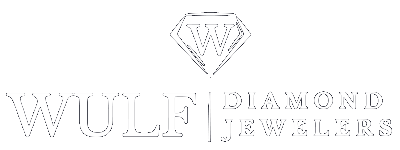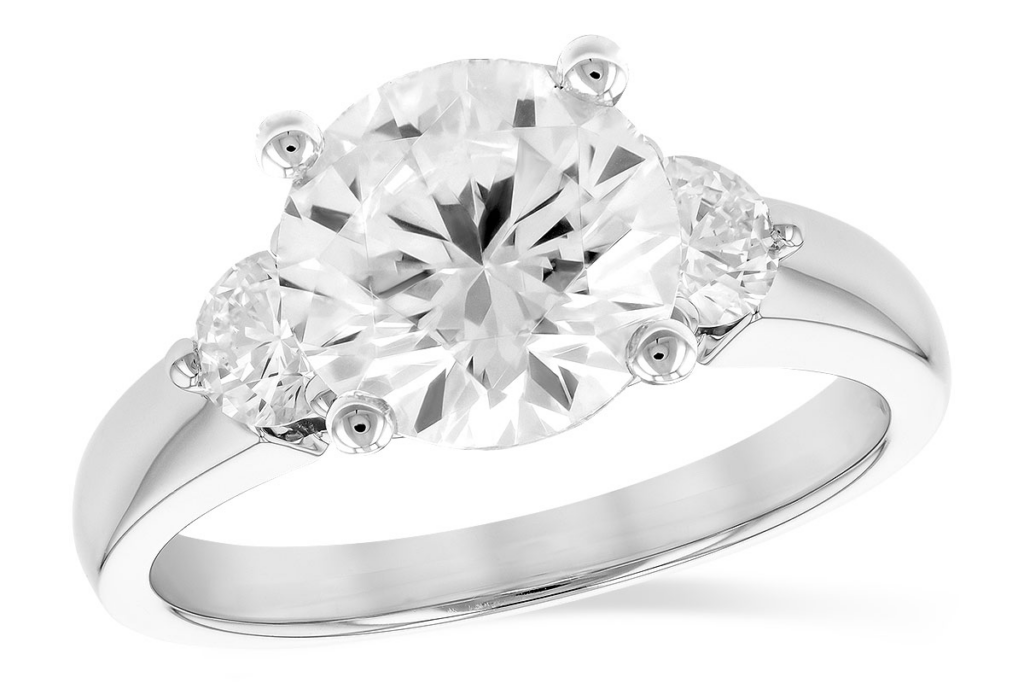Key Takeaways
- A diamond certificate or grading report is a document that shows the characteristics of a diamond
- GIA Diamond Grading Report is the most common and widely accepted grading report for diamonds. Other independent laboratories also have their corresponding reports but all are based on GIA diamond measurements
- The report shows the (1) Grading Report, (2) 4Cs, (3) finish and fluorescence, (4) proportions and measurements, and (5) clarity characteristics (flaws)
- Always check the date of the report. A more recent date will more likely show the real condition of a diamond. Older reports will not show flaws (such as chipping) after the report date.
- GIA only grade loose diamonds. If you want your diamond to be graded, it will be removed from its mounting
Diamond Rating – Beyond the 4Cs
We have all heard about the diamond’s 4Cs. Jewelers and buyers base their buying decisions on these 4 key characteristics. When a diamond does not come without a report, we usually rely on independent appraisers to give us the quality and the value of a diamond.
However, diamonds are more than the 4Cs. Each characteristic is further defined and graded according to a certain set of standards. This is where diamond grading reports enter the picture.
Diamond grading reports, especially one from GIA, AGS, and EGL, show a lot more information about a diamond than the usual 4Cs. Rightly so as this additional information also sets the value of the diamond.
This article will discuss why a grading report is important and explain the report’s different sections.
Diamond Grading Report
A diamond grading report is a document or a “diamond certificate”/diamond dossier issued by an independent Gemological Laboratory as proof that a diamond is meticulously examined and graded.
This report shows the important characteristics and provides valuable information beyond the Color, Carat Weight, Clarity, and Cut of a diamond.
While grading reports do not necessarily devalue a diamond, nor is it a requirement for selling loose diamonds or any piece of diamond jewelry, it is especially useful since some aspects are not visible to the naked eye and such minor difference greatly affects the price of the diamond.
While there are a lot of independent gemological laboratories that issue grading reports, the one that is widely accepted by both buyers and sellers is GIA’s.
GIA is the benchmark for grading diamonds. They are the one who created the standards for diamond grading and has the most advanced gem lab in the world. Important diamonds have a GIA report.
Additionally, other grading reports (such as one from AGS and EGL) follow the same grading or measurements.
That said, this article will explain the different sections found in a GIA diamond report.
How to read a GIA Diamond Grading Report?
The GIA Diamond Grading Report has 7 main sections.

Lab Logo / Report Number

The top-most portion of the report is the Gemological Institute report logo and the Report Number.
The laboratory name says a lot about the credibility of the report, while the report number is akin to a serial number that can be traced on the laboratory’s website.
In this report, you can see GIA’s logo above and the corresponding report number in the middle. This is the same number as what is inscribed on the diamond’s girdle.
It is important to note that you can always trace and verify the diamond grading report on GIA’s website using the Report number.
GIA Natural Diamond Grading Report
On the left side of the report, you will see three subsections. One is the GIA Diamond Grading Report.

Date
The first item you will see is the date the report was generated. The newer the date, the more updated it is. The date of the report is relevant especially for older diamonds since the report may not reflect the defects of the diamond after the report date, such as chips, nicks, and scratches.
Older diamonds are fine if they are important diamonds or diamonds in mint condition. However, when a certificate is old, then it may mean a few things.
When purchasing a diamond, having a newer report is highly recommended to properly assess the characteristics and value of your diamond.
GIA Report Number
GIA Report Number is a unique identifier of both the diamond certificate and the report. The diamond report number and the serial number should always match and the report must be traced on GIA’s website.
If the diamond report that you have is not from GIA, it will still have the same report number. Laboratories save a copy of all certificates they issue, so be sure to know your diamond grading report number.
Shape and Cutting Style
This section describes the shape and the cut of the diamond (round brilliant, emerald cut, heart brilliant, square emerald cut, etc).
Round diamonds are called round diamonds, while all others are called fancy shape diamonds. The cut and measurement determine the number of a diamond’s characteristics. This will be explained further below.
Measurements
Measurement is the diamond’s length, width, and depth in millimeters. You will see the same measurements later on the report but it is reflected as a percentage.
Grading Results – 4Cs
Section two of the report is the Grading Results, also known as the 4Cs of the diamond. It shows the carat weight, color, clarity grade, and cut of the diamond.

This section will just explain in brief the different characteristics. We have published a thorough explanation about the 4Cs of a diamond should you wish to know more.
Carat Weight
Carat weight is the weight of a diamond. 1 carat (abbreviated as “ct”) is equivalent to 200mg or 0.2 of a gram. One important thing to highlight is that diamond weight is not measured the same as any other commodity. All characteristics being the same, 2-carat diamond will cost more than two 1-carat diamonds. The larger the diamond, the more expensive its price per carat.
The concept is really simple. the bigger the diamond, the rarer it is, especially for diamonds with higher clarity and color grade.
This is why every carat difference is important. A difference by a few points may not matter to regular commodities, but it makes a huge impact on the price of a diamond.
Color Grade
Color grade refers to the hue of a white diamond or the intensity of a fancy color diamond. Diamond colors range from white/colorless to yellowish/brownish hue. Such are graded from Colorless (DEF) to yellowish/brownish/grayish hue (XYZ).
Colorless diamonds are extremely rare and equally expensive that a jeweler may spend his entire career not being able to see one. For fancy color diamonds, the deeper the color, the more expensive it is.
While DEF is the ideal, top-of-the-line diamond, A diamond in the HIJ scale covers the right balance between price and quality, more so if the clarity grade of a diamond is high.
Clarity Grade
Clarity refers to how “clean” a diamond is. While a flawless diamond exists, most of the diamonds in the market have some kind of flaw.
Flaws inside a diamond are called inclusions, while those found on the surface are called blemishes.
GIA gives different clarity grades according to the number, size and type of inclusions, as follows:
- Flawless (F)
- Internally Flawless (IF)
- Very Very Slightly Included (VVS1, VVS2)
- Very Slightly Included (VS1, VS2)
- Slightly Included (SI1, SI2)
- Included (I1, I2, I3)

More than the number of inclusions and blemishes in and on the diamond, the placement of these defects is also important. An inclusion placed on the side of the diamond is less pronounced than the inclusion near the center or on the table.
Inclusion and blemishes also help gemologists identify diamonds as no one diamond inclusions and defect is the same.
In the GIA diamond grading report, inclusions and blemishes are noted and plotted accordingly. The details are shown in the Clarity Characteristics section of the report.
Cut Grade
Cut grade refers to the quality of the angles and proportions of the facets of the diamond; in short, it is the quality of how each diamond is cut.
The cut is relevant as this affects how light is reflected and refracted and affects the following characteristics:
- brightness – how bright white light is reflected
- fire – dispersion of the colored light; the separation of white light to rainbow colors
- scintillation – flashes or the contrast between the light and dark shadows in the diamond.
These characteristics are what give the diamond “sparkle.” GIA grades a diamond cut according to how much it makes the diamond shines, with excellent being the highest grade.
- Excellent
- Very Good
- Good
- Fair
- Poor
It is advised to get diamonds with Excellent to Good grades. Fair grade exhibits little sparkle and can be a satisfactory grade for smaller diamonds or side-stones while Poor cut grade exhibits no sparkle at all.
Additional Grading Information

The next section of the report is the “Additional Grading Information” section. It gives the viewer of the report additional information about the craftsmanship of the diamond.
Polish
Polish refers to how smooth a diamond is. The smoother the diamond, the better the light is reflected and refracted.
Think of it as a pool of water: very still calm water reflects light better, while a pool of water with lots of waves and ripples has a poor reflective property.
Just like cut grade, a diamond’s polish has varying grades, depending on how visible the polish flaw is. Almost all diamonds in the market has some sort of polish flaw. Diamonds graded as Fair and Poor are not recommended as such flaws impact the overall diamond’s appearance
The polish grade of a diamond does impact the price but not as much as other diamond qualities.
Symmetry
Symmetry refers to the alignment and intersection of the facets of the diamond.
Symmetry is an important feature as this greatly affects the brilliance of the diamond. As light hits the diamonds at different angles, a misproportioned symmetry will bounce light in different and non-ideal directions.
Just like diamond polish, diamond symmetry is also graded from Excellent to Poor. A diamond graded from “Good” to “Excellent” is ideal. Of course, the bigger the diamond, the more misalignment and disproportions of facets become more visible.
Unlike Polish, Symmetry impacts the price of a diamond. This is so because Symmetry affects how light is reflected back to the eye. If a light is not reflected, the diamond appears dull, dark, or dead.
Fluorescence
Fluorescence is the”glow” of the diamond when exposed to UV light. GIA estimates that about 25%-35% of the diamonds in the market are Fluorescent.
Usually blue, some diamonds emit yellowish, greenish or orange fluorescence. GIA grades fluorescence according to its intensity.
Fluorescence is seen as a diamond flaw. It can make a diamond look cloudy or milky.
However, it can be a good thing for diamonds with Near Colorless to Faint Yellow color, is the blue fluorescence cancels out the yellowish tint. The same is not true for DEF/colorless diamonds.
Should you be concerned about it? The answer is no, unless the diamond’s fluorescence rating is Strong to Very Strong. A GIA report about Fluorescence found that the buying public, even some experts can’t really spot the difference when diamonds are viewed face-up.
Inscription(s)
This is pretty straightforward. When a diamond is graded, the report number is inscribed on the girdle of the diamond. The laser inscription can be viewed in 10x magnification.
The inscription of the diamond matches the GIA grading report.
Note: not all diamonds have inscriptions. When they do, it should always match the report.
Proportions

This section of the report shows the percentage of the diamond’s angles, facets, in proportion to the diamond’s width height, or depth.
Diamond’s width is measured from one point of the girdle to the other side of the girdle. The ideal length to width ratio of a round brilliant cut diamond is 1.0 to 1.03.
Having a perfect or near-perfect diamond measurement gives you the best balance between fire and brilliance. Cuts and angles, even facet alignments greatly affect how a diamond shines.
The table below shows the ideal proportions for round-cut diamonds.
| Item | “Excellent” Range (as per GIA) | Definition |
| Depth | none defined | Table to the Culet. Too shallow – dull diamond Too deep – darker diamond |
| Table | 52% – 62% | The flat portion at the top of the diamond |
| Crown Height | none defined | Height from the edge of the table to the edge of the girdle |
| Crown Angle | 31.5 – 36.5 degrees | The angle of the crown and the girdle |
| Pavilion Depth | none defined | Lower portion of the girdle to the culet |
| Pavilion Angle | 40.6 – 41.8 degrees | Angle of the girdle and the pavilion. |
| Star Length | 40% – 70% | The length of the star facet in relation to the total crown height |
| Lower Half | 65% – 95% | The length of the pavilion facet to the total pavilion depth |
| Girdle | Thin to slightly thick | The “belt” of the diamond; separates the top and the bottom portion |
| Culet | none to very thin | The tip of the diamond |
It is important to note that a diamond’s proportions depend on the diamond shape and type of cut.
Clarity Characteristics
This section of the report plots the inclusions and blemishes of the diamond, which is useful especially when determining a diamond’s value and identifying one diamond from the other.

The most common diamond characteristics noted in the GIA report are as follows:
- Cavity – these are small cuts and indentations found on a diamond in an attempt to get rid of inclusions found on the side of a diamond
- Chips – chips look similar to cavities in a way that a portion of the diamond seems to “chip-off”. However, unlike the former, a chip may be a result of the diamond hitting something hard, or careless handling of either the owner of the diamond or the jeweler.
- Pinpoint – these are small dots similar to pinpricks found on a diamond
- Cloud – when there are numerous pinpoints in one location, it forms a cloud-like appearance, hence the term.
- Crytal – these are small crystals found inside a diamond and will look like a bubble. It can be in a form of a diamond, carbon deposits, other gemstones, and so on.
- Feather – these are hairlike inclusions or blemishes on a diamond. It is barely noticeable depending on the angle to which it is viewed. It s similar to light scoring on the diamond.
- Needle – this flaw has an appearance of a thin needle-like crystal.
- Twinning Wisps – this is similar to the roots of a tree and is a combination of feather, pinpoint, cloud and crystals/needles.
- Natural – these are natural dents found inside a diamond.
The clarity characteristics found here explain the clarity grade given to a diamond.
Grading Scales
This portion of the report just shows the different grading scales for Cut, Clarity, and Color.

AGS, EGL and other Diamond Grading Report
As mentioned, these independent laboratories also issue grading reports for diamonds sent to them. While the terms may be different, they all base their grading system on GIA’s standards.
Below is an example of an AGS report:

Here is an example of an EGL report:

As you can both see, they all show the same characteristics of the diamond. Therefore when submitting your diamonds for grading, it all depends on your preference.
Choosing the Best Diamond for Your Jewelry
This article gives you a brief overview of what a diamond grading report is, how to read a diamond grading report, and what aspects to look for when buying a diamond. This article also gives you a primer on the different clarity characteristics and proportions which will be helpful when purchasing loose diamonds or diamond jewelry.
While each diamond is unique and has its own share of different flaws and proportions, remember that the perfect diamond for your engagement ring and other jewelry is the one that strikes the balance between quality and budget.
There are ways to hide a diamond’s flaws and color hue. For example, a natural dent found on the side of the girdle can be hidden by the type of mounting you choose for your engagement ring.
Likewise, for diamonds on the yellowish/brownish color spectrum, opting for a gold or rose gold metal will mask the hue of your diamond.
For diamond rings with side stones and stone accents, you can choose lower-quality diamonds to drive the price down.
We at AaLAND Diamond can help you have the perfect diamond jewelry that will make you and your purse happy. Call us to know more!



